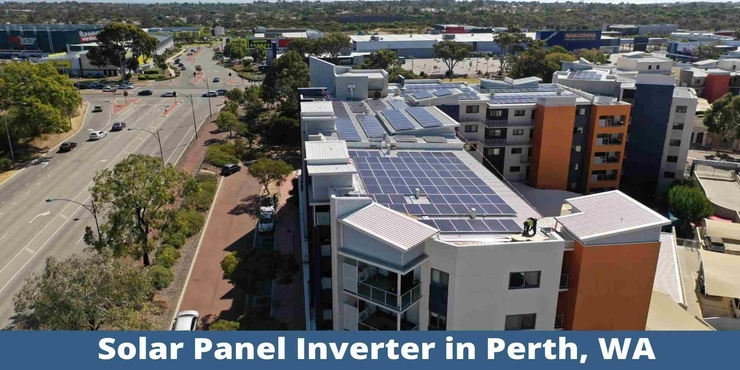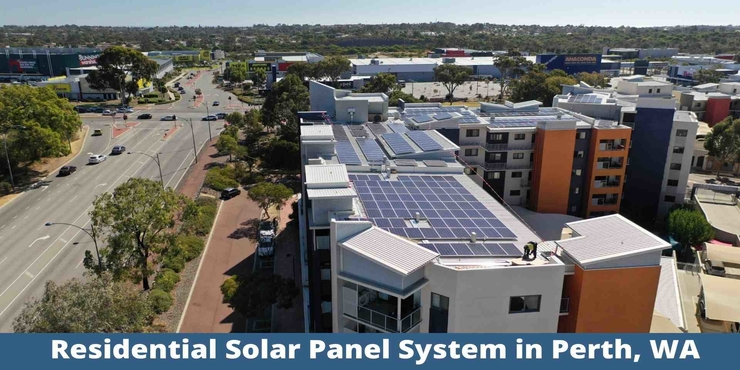Technology is advancing so rapidly, it’s very difficult to keep up. Due to rapid technological advancement, the presence of solar power is expanding all around us from home rooftops to superstores to desert areas.
It’s the most effective solution to the climate crisis which also leads to job creation, money-saving and decline of carbon pollution affecting our planet. Solar technology captures energy from sunlight and converts it into electricity. The solar power inverter system consists of an inverter as well as the solar panels.
Solar Power/ Panel PV System Inverters Installation & Repair In Perth, WA
The solar inverter is an important element of the system as it transforms the Direct Current (DC) electricity from the solar array into a serviceable Alternate Current (AC) electricity. Inverters are also significant for ground fault protection, system stats like energy production, voltage and current, and extreme power point tracking.
If the solar panels act like the system’s heart then the inverters are the brain of the system. If you are wondering why to make use of solar inverter instead of the normal electric one then it is because the solar one makes use of the solar energy which is available in plentiful from the Sun and is fresh and pollution-free.
Choose Us for Solar PV Inverter Installation and Repair
Clients who choose Solar Panel Cost Price are benefited in maximizing the return they receive from the products. It benefits the customers both in commercial and residential to lower their electricity bills through advanced solar technology with reliable and extensive solar products.
The team of expert engineers works very hard in researching for the best solar products that are available in the market. On choosing the experts to play an important role to customize and tailor the system to get the most out of it as for efficient solar inverter installation and solar inverter repair.
Types of Solar Power Inverter
Inverters are vital of any solar installation as they are the brains of the system. Inverters have the responsibility for efficient battery management. The different kinds of inverters include string inverters, hybrid inverters, microinverters, central inverters and battery-based inverters.
- String inverters are the most common kinds used for residential purposes. They are all arranged in a line and are called so because there are numerous numbers of strings connected to them. They are considered as the best solar inverter for the home in the competitive market.
- Hybrid inverters also known as multi-mode inverters allow the users to plug batteries in the solar power Perth. The Electronics control the charging and discharging of the battery. But there is a limited choice.
- Central inverters come in a variety of choices ranging from a few megawatts to hundreds of kilowatts. These big metal cabinets can handle up to 500kW per enclosure. They are not at all suitable for home and are best for large farms or commercial spaces.
- Microinverters are tiny solar inverters about the size of a paperback book. They are able to improve each solar panel individually and are able to deliver more energy especially if you have limited shade conditions.
- Battery inverters easily convert the solar battery power into 230V AC to then feed it into the switchboard where the grid power is required.
Solar Power Inverter Size & Price Comparison List in Perth, WA
This is the solar inverter price list with also the provision for solar inverter comparison. (approximately)
| Size | Price |
| 1.5 kW | $ 3,500 |
| 2 kW | $ 3,800 |
| 3 kW | $ 5,570 |
| 4 kW | $ 5,800 |
| 5 kW | $ 6,300 |
| 6 kW | $ 7,100 |
| 8 kW | $ 9,450 |
| 10 kW | $ 12,000 |
| 15 kW | $ 17,000 |
Let’s give you an idea of the solar inverter prices in Perth, WA:
- $4,000 or less (Extremely cheap)- these are mostly used for small business with less overhead costs but they have less life and have low efficiency so it’s the worst choice in the market.
- $5000-$6000 (normal cheap)- they are still cheap but consist of basic panels and are Chinese made so no guarantee of efficient use.
- $6000-$9000 (normal premium)- these are the most common in Australia and are really good quality products with that amount.
- $9500 and above (expensive)- these cause a hole in the pocket and lead to difficult installation situations. They can be used in terms of special solar technology.
How to Pick A Best Solar Inverter of Your Need In Perth, WA
When it comes to picking out the best solar inverter brand you’d like for your system, much of your decision will come down to the specifics of your property and the situation. Proper research should be done before opting for one.
Second is to compare and evaluate the options that are available in the market. The parameters of the numerous kinds should be kept in mind to ensure its functioning. It is significant to see that the solar inverter provides numerous optional accessories as well as a tracking device. Features like it being weatherproof and proper cooling and ventilation should also be taken into consideration. So, make sure that you choose wisely and never regret the decision in the future.
Sizes of Solar Power Inverter Popular in Perth, WA
1) 1 kW Solar Inverter
These kinds of installations are rare as there are better options available in the market nowadays. The relative use of these is mostly with other existing solar installations. In Australia, 1kW would be most appropriate for a house with slight daytime energy needs.
2) 2 kW Solar Inverter
The 2kW solar system prices range from about $2,100 on the low end to $5,700 on the high end. The prices depend on factors like the amount of solar incentive, location and the products used.
3) 3 kW Solar Power Inverter
For an Aussie household, a reliable and cost-effective 3kW solar system is the most efficient choice available in the market. They are normally installed and are boundless for average-sized households with a regular electricity bill.
4) 4 kW Solar Power Inverter
This is the most used inverter for small working families because of its best efficiency. They are the best for the environment and suitable as per the budget, location and lifestyle. It mostly consumes 18 units per day and has an average payback period of 3 to 4 years.
5) 5 kW Solar Panel Inverter
The solar inverter system of choice for average to large households, a 5kW solar system cost per kilowatt is inexpensive of all the solar system sizes available in Australia. This inverter consumes 22 units per day and has 2.5 to 4 years of the average payback period.
6) 6kW Solar Panel Inverter
With a total consumption of 26 units per day, this inverter is very ideal for medium to large families with low budgets. This is inverter offers cost-effective and reliable energy solutions.
7) 7kw Solar Panel Inverter
This inverter is best suited for large households with an electricity budget of $500 plus per cycle. It mostly consists of 21 to 28 panels and consumes nearly 31 units per day and has 2.5 to 4 years of the average payback period.
8) 8kW Solar Panel Inverter
This inverter is best when there is a presence of higher than average electricity needs. It is an affordable and reliable choice in the market of Perth when it comes to solar inverter prices in Australia. It consumes nearly 35 units per day and has 2.5 to 3.5 years of the average payback period.
9) 9kW Solar Panel Inverter
This inverter makes sure to make the best of the investment by the consumers. This inverter is a great choice if a consumer has a large house and the large electricity needs to go along with it. It consumes nearly 40 units per day and has 3 to 5 years of the average payback period.
10) 10kW Solar Panel Inverter
This size is the best investment for Australian houses with high levels of electricity consumption or businesses with relatively fewer electricity requirements. They comprise of nearly 30-40 panels and need up to 50-68 m sq. of roof space.
15) 15kW Solar Power Inverter
This is the largest solar inverter available for residential purposes and is viable for households and home offices with greatly high energy bills. Due to the decreasing cost, these have become cost-effective than ever and consume only 60 units per day.
Contact Us Now for Best Solar Panel Inverter Brand in Perth, WA
You can trust our professional experts in Perth as they possess the required qualifications and decades of experience to make sure that you get the best in the market. We make use of highly commended products in Australia. We also cover both commercial and residential solar system installations, maintenance and repairs in Perth which also includes the solar inverter replacement costs.
Solar Power Inverter FAQ
1. What is the Average Price of Solar Inverters in Perth, WA?
The prices in Australia are mainly down to the quality of the hardware used in the installation. Like for instance, the average cost of a 5kW system is around $6300, but it can be more expensive in some areas.
2. What is the Difference Between Normal & Solar Inverters?
The main point of difference is the source of energy. Normal inverters make use of fuel, gas or electricity, as their main source and generate power from it whereas solar inverters use solar energy as their power source, they convert direct current obtained from photo-voltaic (PV) panels to alternating current for further utilization.
3. What is the Lifespan of a Solar Inverter In Perth, WA?
Most inverters have a life expectancy of 10 years. With good maintenance, they can live up to 20 years too.
4. How To Read Solar Inverter Meter?
The buttons on the meter have various functions like the Display button which shows the total accumulated energy consumption of the property. The Boost Button allows the customer to activate electricity for hot water system users. Scroll helps to move through diverse displays. These are some of the functions available on the smart meters.





